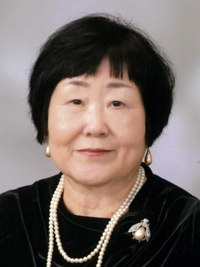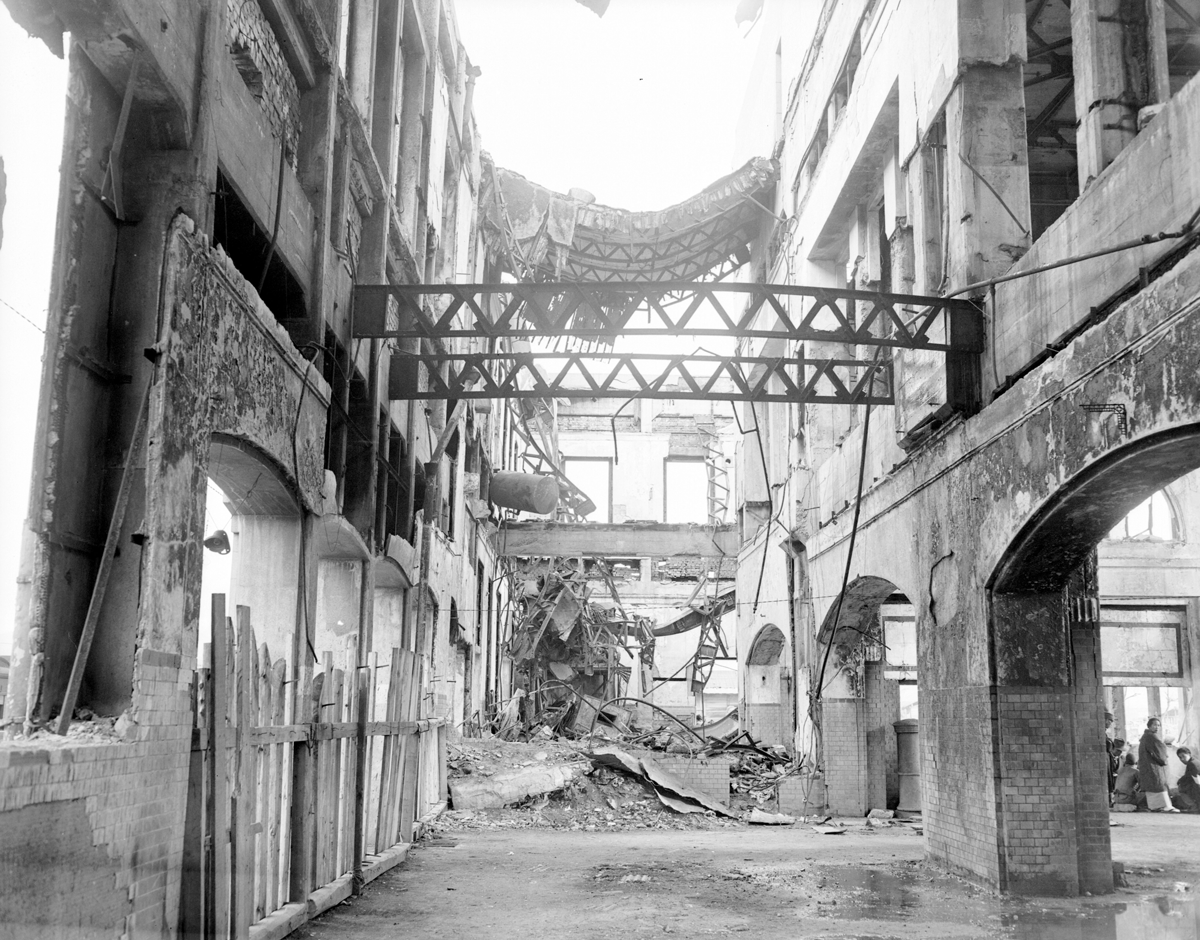Memoir of the A-bombing;
To Those Who Do Not Know War
Tomoko Wakimasu
Atomic bomb survivor registered with our Foundation

Tomoko Wakimasu
Atomic bomb survivor registered with our Foundation
August 6, 1945
I was three years old at the time. On that day, my mother and I took a train from Mukaihara Station on the Geibi Line to Hiroshima, planning to return to our home in Kure from my mother's parents' house in Yoshida Town, Takata County (at that time). However, due to the atomic bombing, we were all dropped off at Hesaka Station, so from there we headed on foot to Hiroshima Station (about 1.9 km from the hypocenter).As we approached Hiroshima Station, we began to pass by people fleeing after the bombing, and when I saw them I said, "Ghosts! There are ghosts!" My mother later told an acquaintance that she felt sorry for the people around me and was really embarrassed at that time.
After that, we traveled back and forth between Kure and Yoshida Town many times, partly because we were worried about my sister who was staying in Yoshida as part of a school evacuation program back then, and partly because we needed to get food.
Orphans who starved to death
"In Hiroshima, after dark there were continuous dark, dark nights. Even if we slept outside, not a single mosquito was to be seen. In the city of Hiroshima, where all living things had been burned to the ground, among the survivors were children who had lost their parents. There was nothing to eat, and one by one, they died. When someone picked up the corpse of one of the children to cremate, the mouth of the child who had died of starvation opened and inside was a small stone." At the time, there were no newspapers or radios, and this story was passed from person to person.I was three years old, and I also watched as the adults tearfully saying, "Poor little thing, it must have been so hard for you, starving to death..." I wondered if the child was hungry and the stone looked like candy...maybe putting something in his mouth gave him comfort...it was so sad to see him die alone... I imagined the child, and said, "Mother, if he drank water from the river and ate grass, he would not have died. Why didn't anyone tell him that?" Normally I would have been scolded for interrupting an adult's conversation, but all the adults were speechless with tears. After a while, my mother told me: "The town of Hiroshima was burned to the ground, leaving not a single blade of grass, not a single tree. There were no insects, and there was nothing to eat. People are saying that there will be no grass or trees for 70 years. Even if he wanted to eat grass, there wasn't any."
Do you know about radiation?
I was commissioned by the Hiroshima Peace Culture Foundation in April 2022 as a witness of the atomic bombing. Since then, I have been sharing my experiences with elementary, junior high, and high school students from all over Japan who visit Hiroshima as their school excursions for peace studies.Many students interpreted the atomic bomb as simply a large bomb, one that would take the lives of many in an instant and wreak unimaginable destruction on a city. However, my story ...is a decade-long struggle with low-grade fever after the bombing. Days of continuous vomiting and diarrhea. Days of being prone to bleeding and feeling anxious. Swollen thyroid gland. Days of suffering due to reduced heart function. When I told students about my heart that finally began to function normally 35 years after the bombing..., they said, "I mistakenly thought that those who survived the bombing were already fine. I learned for the first time that what is really frightening is the invisible effects of radiation."
I realized how important it is to convey the horror of the effects of radiation.
At the same time, I was worried that perhaps the fear of radiation was not being conveyed to many people around the world.
When we were exposed to the atomic bomb in 1945, the general public had no knowledge of radiation. This led to a large number of victims who entered the city and suffered extensive damage from the atomic bombing. Those who managed to survive the atomic bombing at that time suffered from aftereffects for years and years afterward, leaving behind a great deal of medical data and testimonies of their A-bomb experiences. Are these facts acknowledged and do they have an impact on people around the world? We believe that it is our duty as the A-bombed nation to present and share the entire reality of the atomic bombings to the world in a concrete way that everyone can understand.
I will do my utmost to serve in a small way.
Tomoko Wakimasu
Exposed to the atomic bombing when she was three.
Author of "An Elderly Woman's Musings on Life (Japanese only)", "For the Person Who Doesn't Know About the War: My Life after Surviving the Atomic Bomb at Age Three" and "Don't Forget Hiroshima"
Hiroshima Peace Culture Foundation
1-2 Nakajima-cho, Naka-ku, Hiroshima 730-0811 JAPAN
Phone 082-241-5246
Copyright © Since April 1, 2004, Hiroshima Peace Culture Foundation. All rights reserved.
